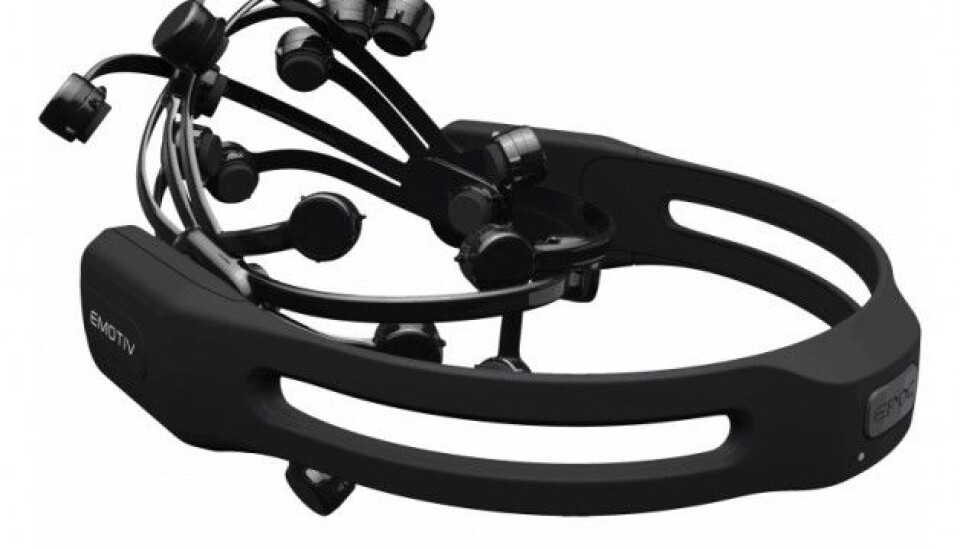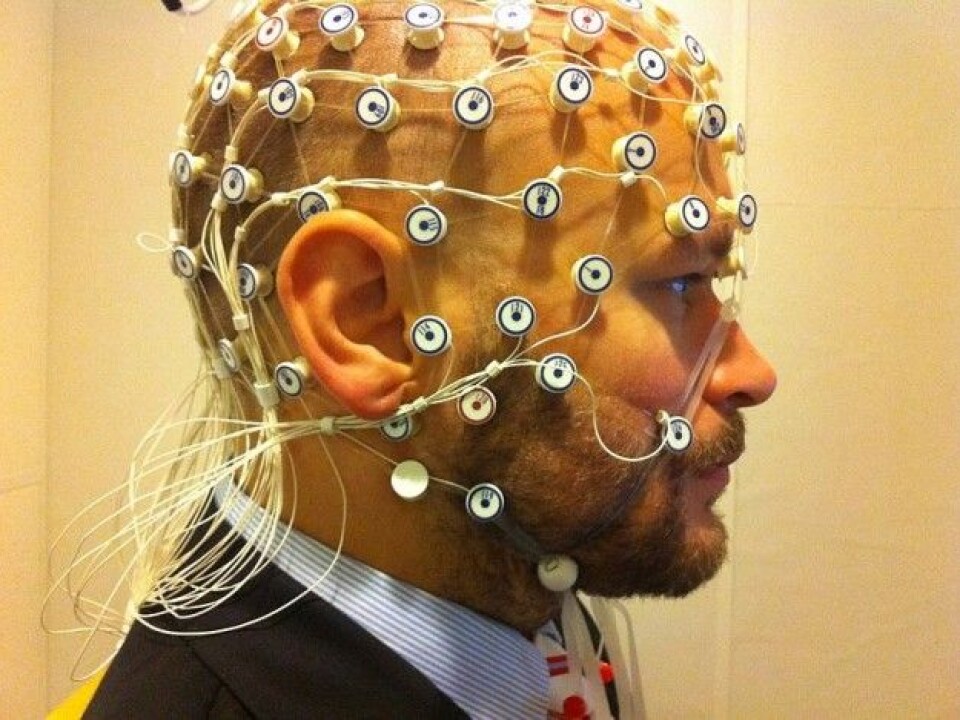
This drone will obey a winking eye
Video: Watch the underwater drone that can be guided by facial expressions.
A wink or a sly one-sided smile can be interpreted in so many ways. But for a handful of electrodes, a laptop and a small submarine drone or robotic vessel it can only mean three things: “Motor forward. Turn to the left. Turn to the right”.
Master degree student Bent Arnesen wears a helmet consisting of long black tentacles of wiring with sensors on both ends. He has a laptop connected to a small yellow robotic drone just below the surface of a pool.
We are in one of the laboratories of the Norwegian Marine Technology Research Institute (Marintek) in Trondheim. The shallow pool stretches far into the building. The hushed atmosphere seems to be making the ceiling seem even lower. Now and then the silence is broken by the echo of water sloshing against the white mortared brick walls.
Arnesen sits in a chair at the end of the pool with his hands resting on his knees.

He is about to demonstrate real mind power.
Grimaces make electrical impulses
“When we move about, or think, for that matter, electrical impulses are emitted by the brain,” explains Arnesen.
These signals can be detected and measured. Of course that is nothing novel, as electroencephalograms (EEGs) ― measurements of these impulses ― have been in use since 1929. Brainwaves, which have an electrical potential of about 50 microvolts, are still used diagnostically and in medical experiments.
But these signals can be put to other uses.
How it works
Arnesen sits in complete concentration, staring straight ahead. Then he blinks his eyes.
BEEEP! Sounds from the pool. The drone starts moving forward. Then Arnesen makes a half smile, raising the left side of his mouth. BEEEEP! The drone turns to the left.
It’s well known that we can move objects by the power of thought – given sufficient technological help. Arnesen’s helmet is doing that job here. Of course programming the helmet required its share of brain power too.
“This helmet picks up brain impulses with its sensitive sensors. A saline solution is the medium that carries the signals from the scalp to the sensors,” he says.
The signals continue by Bluetooth to a computer. The software manages to analyse and interpret the orders and relay them to the drone. The project is one of many running at Marintek, at the Norwegian University of Science and Technology (NTNU).
Whatever can be imagined
The helmet was constructed by a commercial firm. It came equipped to filter out the signals made when the wearer blinks his or her eyes or grimaces with an uneven smile.
Then all that Arnesen needed to do was to program the code to translate these brain signals to commands to the drone. The sub-surface drone is usually guided by a joystick and used for tasks like inspecting pipelines on the seabed.
Arnesen has faith in the future prospects for the technology.
“The technology can potentially be used to relieve the operators. It’s often hard to steer with a joystick. Maybe we could make drones that combine guiding by mind power and the use of VR goggles.”
Later it won’t just be robots or drones that will be guided in this way. Arnesen points out that the technology could readily be adapted for persons who rely on electric wheelchairs. In time it could suffice to just think the command “Turn left”.
“We are only limited by the scope of our fantasies,” he points out.
Still hard to read minds
The technology that would enable brainwave-guided wheelchairs has been around for years. The helmet worn by Arnesen, called an EPOC, can even be purchased online.
So why aren’t we using more mind-guided technology today?
“This is clearly still a little way off. For instance there are not all that many of these helmets for sale,” says Professor Ingrid Schjølberg. She is Arnesen’s advisor and has among other things, managed the ROBOTNOR centre for advance robotics.
“This project is mostly to demonstrate the kind of things that we can already do now,” she says.
And accessibility to the hardware is not the only hindrance.
It is not accidental that the manufacturer of the brain sensor has chosen to chart the signals from winking and smiling. Blinking the eyes, for instance, creates such a signal strong enough to disturb EEG measurements during medical diagnostic tests. This makes it easier for the helmet to detect and filter out the right signal.
It is much harder to chart a thought like “turn to the left now”.
“It’s still hard to know exactly where in our brains our thoughts come from. The location can also vary from one person’s brain to another’s. Identifying from where the electrical signals of a specific thought are emanating still poses a big challenge,” explains Arnesen.
-------------------------------------
Read the Norwegian version of this article at forskning.no
Translated by: Glenn Ostling






























